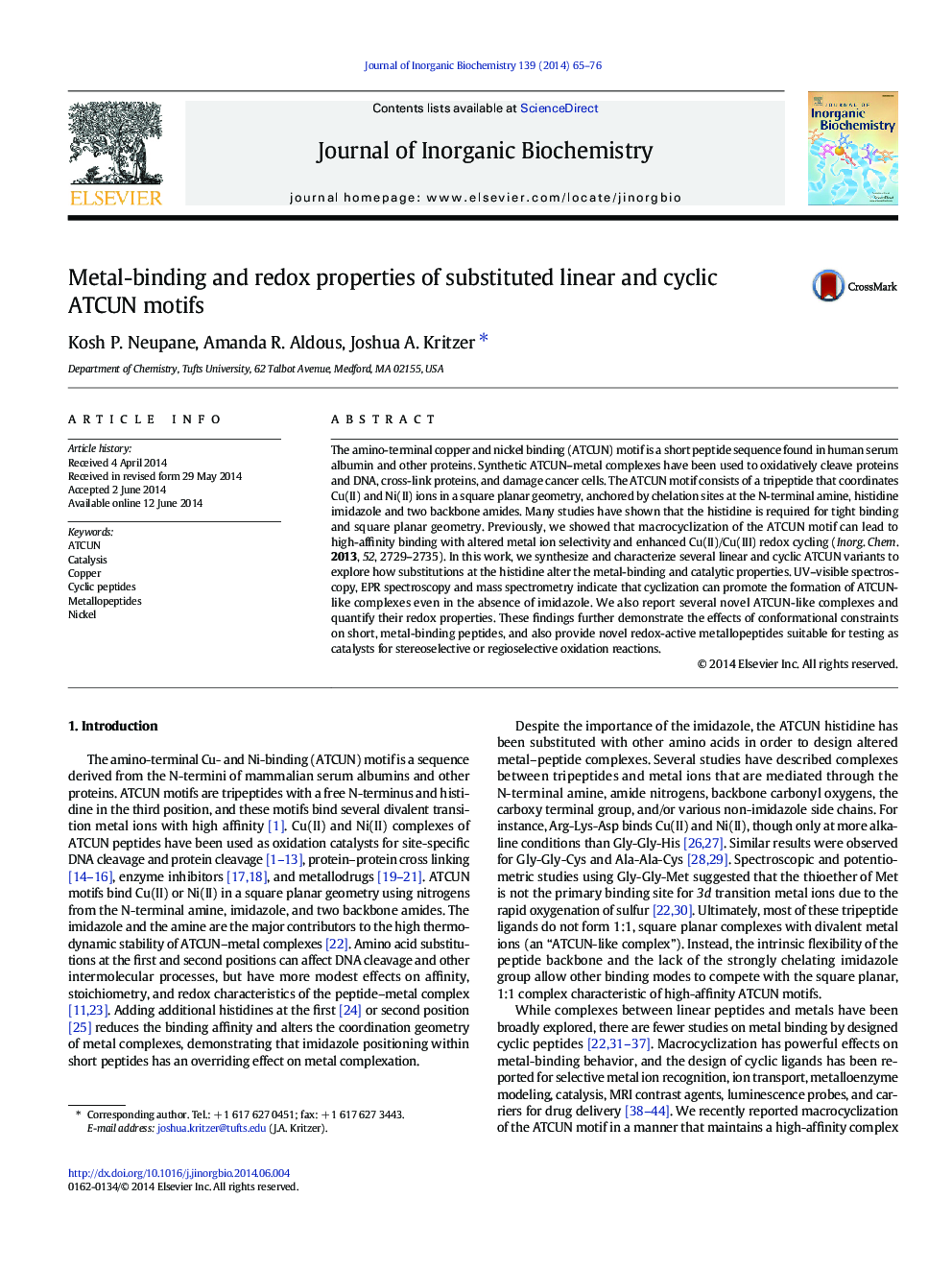| کد مقاله | کد نشریه | سال انتشار | مقاله انگلیسی | نسخه تمام متن |
|---|---|---|---|---|
| 1316656 | 1499448 | 2014 | 12 صفحه PDF | دانلود رایگان |

The amino-terminal copper and nickel binding (ATCUN) motif is a short peptide sequence found in human serum albumin and other proteins. Synthetic ATCUN–metal complexes have been used to oxidatively cleave proteins and DNA, cross-link proteins, and damage cancer cells. The ATCUN motif consists of a tripeptide that coordinates Cu(II) and Ni(II) ions in a square planar geometry, anchored by chelation sites at the N-terminal amine, histidine imidazole and two backbone amides. Many studies have shown that the histidine is required for tight binding and square planar geometry. Previously, we showed that macrocyclization of the ATCUN motif can lead to high-affinity binding with altered metal ion selectivity and enhanced Cu(II)/Cu(III) redox cycling (Inorg. Chem. 2013, 52, 2729–2735). In this work, we synthesize and characterize several linear and cyclic ATCUN variants to explore how substitutions at the histidine alter the metal-binding and catalytic properties. UV–visible spectroscopy, EPR spectroscopy and mass spectrometry indicate that cyclization can promote the formation of ATCUN-like complexes even in the absence of imidazole. We also report several novel ATCUN-like complexes and quantify their redox properties. These findings further demonstrate the effects of conformational constraints on short, metal-binding peptides, and also provide novel redox-active metallopeptides suitable for testing as catalysts for stereoselective or regioselective oxidation reactions.
Cyclic ATCUN variants were designed and synthesized to explore how substitutions at the histidine alter metal binding and catalysis in ATCUN–metal complexes. Novel metallopeptide catalysts involving Cu (II) and Ni (II) redox chemistry are described and characterized.Figure optionsDownload as PowerPoint slide
Journal: Journal of Inorganic Biochemistry - Volume 139, October 2014, Pages 65–76